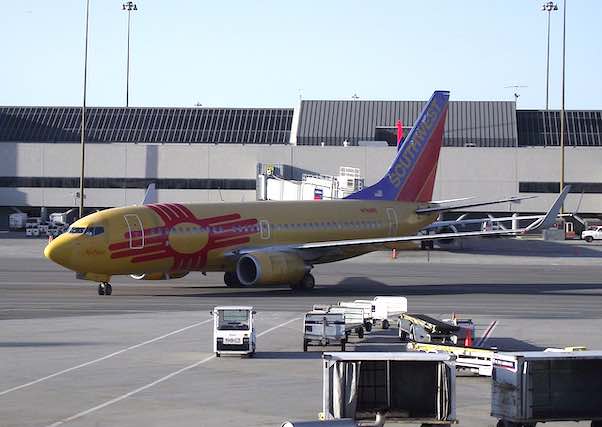
Southwest Airlines’ organizational structure (company structure) promotes centralized strategic decision-making processes. As a major low-cost carrier with international operations, the company has an organizational design representative of a business configuration that enables strong corporate headquarters in controlling all areas of operations. In this structural system, Southwest possesses a rigid hierarchy that addresses strategic management concerns. The corporate structure facilitates the administration of the aviation company’s resources, including human resources. In its organizational development, starting as a local carrier in Texas and now an international low-cost airline business, Southwest has largely maintained its organizational design and its organizational structure’s characteristics. It is apparent that the company finds its business structure ideally applicable to its operations in the transportation sector. Its profitable performance and large operational scale indicate that Southwest Airlines benefits from its organizational structure’s implementation to address business needs and strategic challenges in the international commercial aviation industry.
The business strengths, core competencies, and competitive advantages shown in the SWOT analysis of Southwest Airlines are partly a result of human resources and strategic support from the corporation’s organizational structure. The company uses its business structure as a tool to manage operations while competing with other firms, like American, Delta, and United. Structural characteristics also facilitate strategic planning and implementation to address trends in the industry, such as those identifiable through a PESTEL/PESTLE analysis of Southwest Airlines Co.
Southwest’s Organizational Structure Type and Characteristics
Southwest Airlines has a U-form organizational structure. The unitary or U-form structure is also known as the functional form because of the use of business function as a basis for grouping resources and activities, such as finance and airline marketing in this case. Southwest’s structure is typical in businesses that seek to maintain strong central control on all operations via top-level strategic management at the organizational headquarters. The following are the main features of Southwest’s organizational structure:
- Groups based on business functions specific to commercial aviation
- Centralized hierarchy
Groups Based on Business Functions. In its U-form corporate structure, Southwest Airlines groups business activities and resources according to business functions. For example, the company has a functional group or department for finance and another functional group for daily operations in commercial aviation. Aside from these main function-based groups, Southwest’s organizational structure involves subgroups that report to one or more executives. For instance, the heads of Ground Operations and Cargo Operations report to the Senior Vice President for Operations and Hospitality. This characteristic of the company structure ensures that Southwest Airlines maintains effective business functions that are arranged in a way that strategically supports the entire organization. An implication of this organizational structural characteristic is the possible creation of new functional groups or departments whenever a new product/service or business area is developed, such as the creation of new international flight routes or new complementary operations in the aviation industry.
Centralized Hierarchy. A major characteristic of the U-form organizational structure is a centralized hierarchy, which in this case defines Southwest’s system or arrangement of resource and activity groups and how they relate to each other. For example, at the organizational headquarters, senior executives make the decisions that are relayed and implemented in the divisions of the commercial aviation operations. The corporate structure’s relaying and corresponding lines of authority are vertical (top-down), starting from Southwest’s CEO, through middle management offices, down to the rank-and-file employees in daily operations. Thus, the aviation company’s organizational chart represents the CEO and other senior executives at the top of a pyramidal structure, with the bottom groups representing the frontline employees. Centralization ensures the fulfillment of Southwest Airlines’ corporate vision and mission statements in terms of executive control and direction of the enterprise toward strategic goals and objectives. This organizational structural characteristic ensures centralized control in all airline operations. Also, this type of business structure aggregates expenditure and minimizes redundancies, thereby contributing to the effectiveness of Southwest Airlines’ generic competitive strategy and intensive growth strategies in using low costs as the main basis for penetrating current markets.
Advantages & Disadvantages of Southwest’s Corporate Structure
Advantages. An advantage of Southwest Airlines’ organizational structure is the strong control that corporate executives have on operations. Control is achieved through the hierarchy and functional groupings that correspond to the different areas of the airline business. Another structural advantage is the redundancy minimization in Southwest’s operations through aggregation of activities and resources based on similarities in business function and strategic objectives. Minimized redundancy allows the company to avoid unnecessary costs in its airline operations.
Disadvantages. A disadvantage of Southwest Airlines’ company structure is the limited organizational flexibility, which is typical in traditional businesses with unitary structural forms. For example, the organizational structure comes with strong strategic management control, but at the expense of flexibility in allowing various organizational areas or components to change operational tactics and strategies to suit the daily challenges they face in commercial aviation operations. In addition, Southwest Airlines’ organizational culture (business culture), which implies teamwork, is not strongly represented in the corporate structural characteristics. This disadvantage is notable, based on the company’s aim of providing a warm and friendly atmosphere to attract travelers.
References
- Junge, S., Luger, J., & Mammen, J. (2023). The role of organizational structure in senior managers’ selective information processing. Journal of Management Studies, 60(5), 1178-1204.
- Southwest Airlines Co. – Form 10-K.
- Southwest Airlines Co. – Leadership.
- Southwest Airlines Co. – Senior Executive Leaders.